Growing up as a kid was tough because I came from the wrong side of the tracks,” Chris Burgess, owner of this slick ’52 GMC pickup, told us. “I basically had nothing, and I learned at an early age that to get anywhere in life, you have to work hard. So I did.” This isn’t some kind of lead up to a story about a guy who has had the same vision of the same truck stuck in his head since childhood.
Chris has never owned a custom anything until this point in his life (he’s 43 as of the year 2017), but he’s always appreciated the look of older customized pickups.
After being discharged from the military, Chris drove a truck for a living. He wasn’t a stranger to putting in a full day’s work, and he has since done very well for himself riding the roads between coasts. The idea of buying or building a truck hadn’t been in the stars for him in the past because he was away from home a lot. He never really had a burning desire to chase a build until the day arrived that ended up taking his life in a different direction.
“I was hauling a load through Kansas, and I spotted a Model A two-door sedan with faded ugly brown paint and black wheels and fenders. I instantly fell in love with the vision of this look on an old pickup. I’d never owned a custom vehicle before, but at that point, I was able to imagine myself driving a truck that could look like that.”
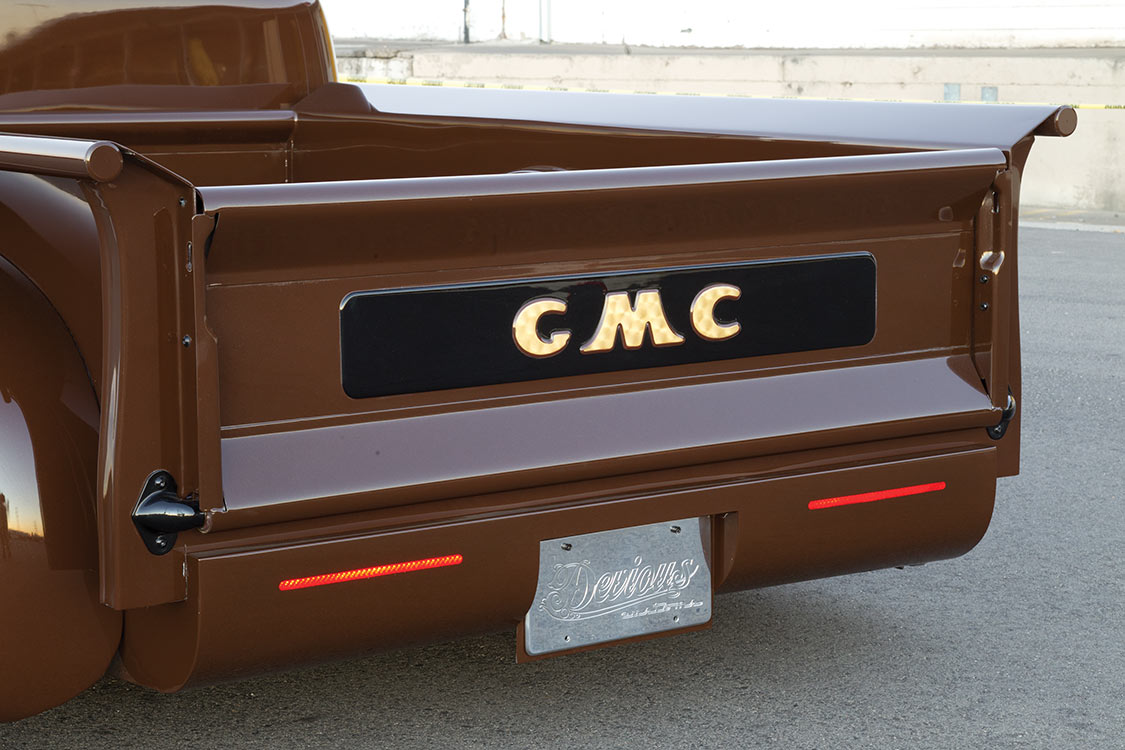
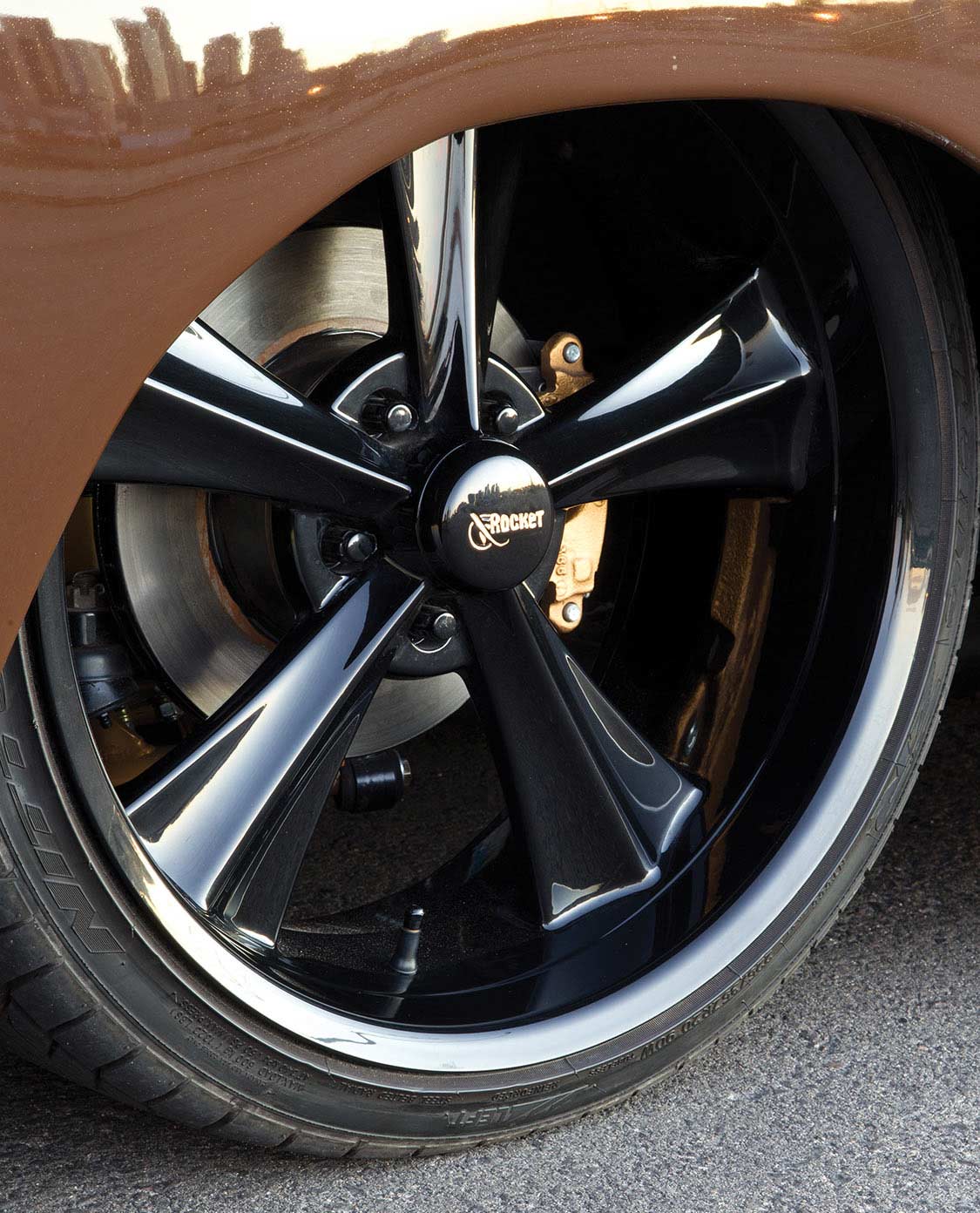
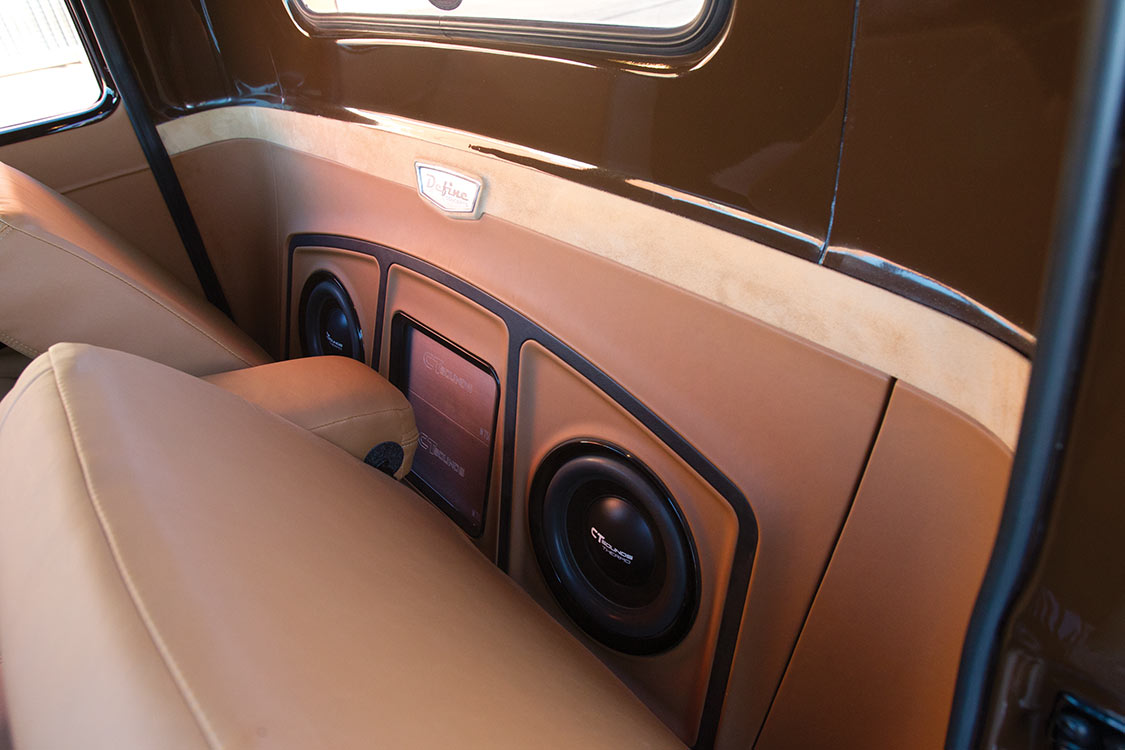
After that first encounter, Chris went about his daily routine. Quick flashes of rolling around in a cool truck would surface in his thoughts, and then scurry to the back of his mind. More and more, though, he found himself daydreaming about what was becoming an obsession, and since he had a few informal connections on social media who could clue him in to how full-blown projects work, he figured he’d hit them up when he had some free time.
“I was following this guy Jeff Davy from Devious Customs on Facebook and Instagram who was always posting photos of all the crazy cars and vintage trucks he was piecing together. His shop was near my home in Riverside, so I messaged him one day and asked him a few questions about his operation.”
The two chatted for an hour and started bouncing ideas off each other about timelines and ideas relating to starting a project—if and when Chris actually locked down a truck. “At this point, I was all talk I guess since I didn’t even own a vintage truck for them to work on, but I was convinced that Jeff and his team would be able to build the vintage truck I had described.
We hit it off, shared similar tastes in cars and had a good hour-long conversation that first time we talked. The very next day, I went to Devious Customs and put down a $1,000 deposit to get on to Jeff’s schedule calendar. I may have been jumping the gun a bit, but I did have a lead on a pickup that I was sure I could grab.”
More and more, though, he found himself daydreaming about what was becoming an obsession.”
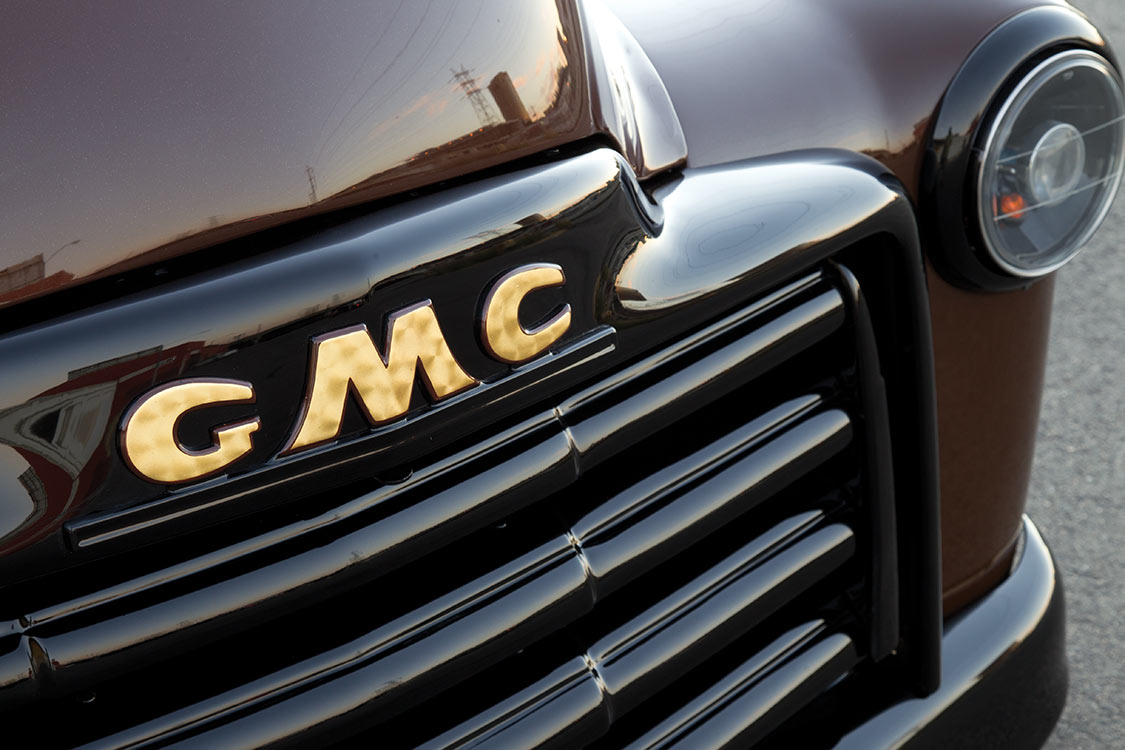
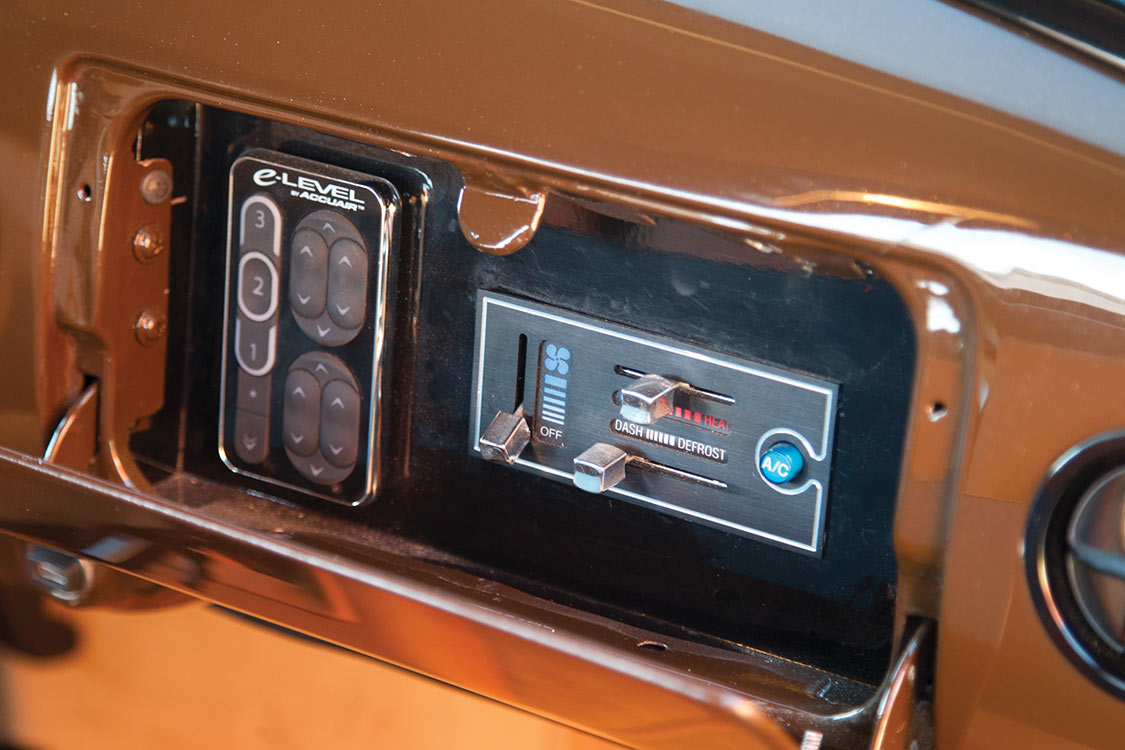
Just like that, Chris was on the board at the shop. He told Jeff all about the truck he spotted for sale not too far away. The next day, the two headed out with a trailer to see what was what. “Jeff picked me up in the morning the next day, and mind you, we had only known each other for two days at this point, but he was excited about my excitement …”
The two traveled through the winding back roads of the Temecula, California, wine groves to where the truck was stored. The previous owner was there to show the ’52 GMC to potential buyers. “There had been a substantial amount of work done to the truck already and a lot of parts that would come with it too,” Chris says of that first day looking at his future project vintage truck. There was some back and forth between the two parties, but Chris was ready to close the deal and take the truck back to the shop so Jeff and crew could get to work on it. The guys cooked up a plan of action on the way back to Devious HQ, and the vintage truck was left at the shop for the duration of the rehab process.
The idea of buying or building a truck hadn’t been in the stars for him in the past because he was away from home a lot. He never really had a burning desire to chase a build until the day arrived that ended up taking his life in a different direction.”
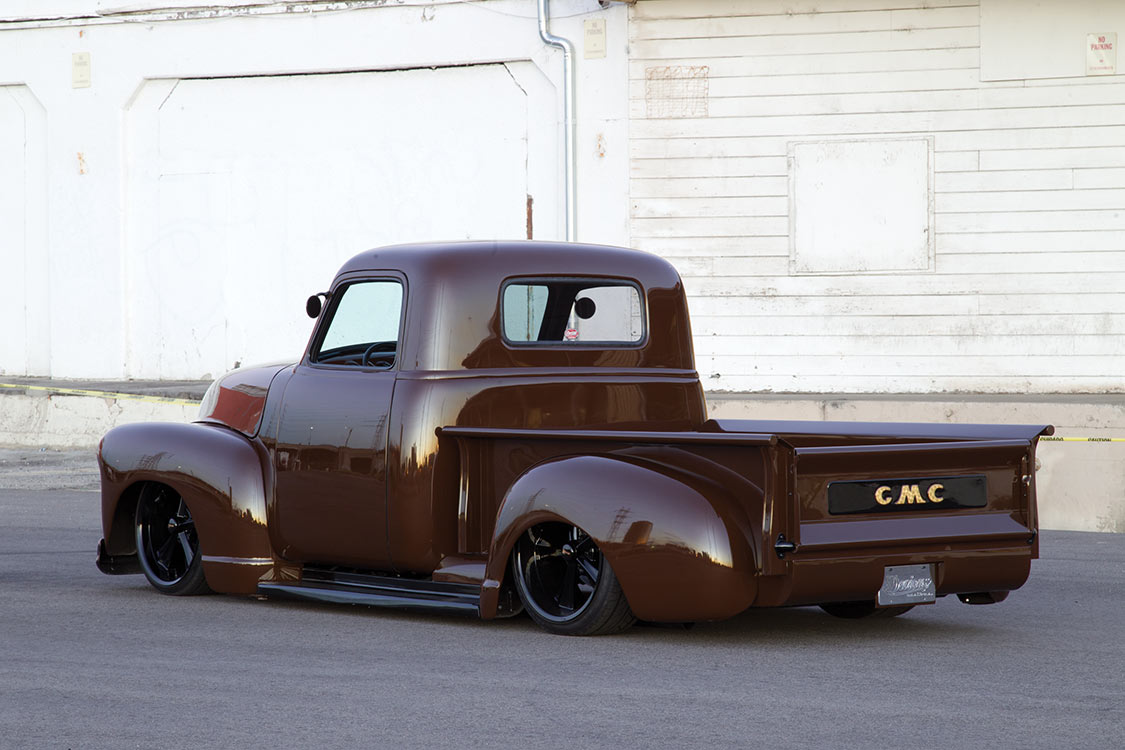
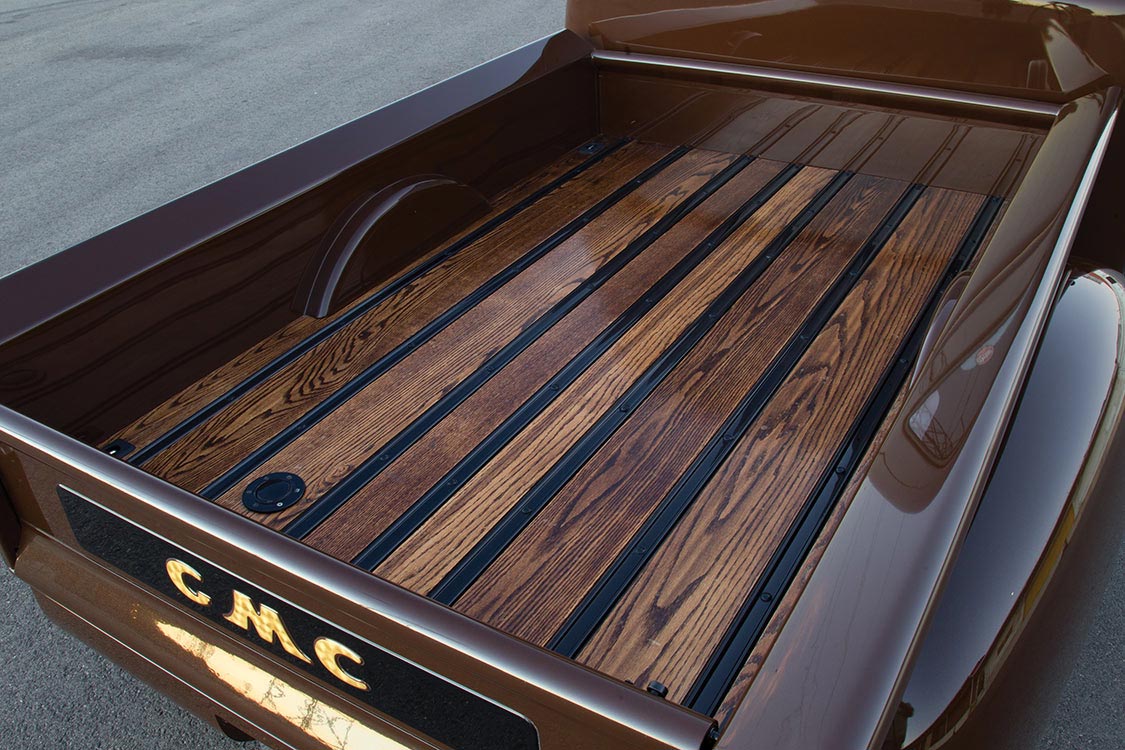
Jeff has years of experience in the one-off design and build game, and in that time he has created some memorable rides, which is why Chris was so eager to involve Jeff in his first custom project. “Like always, we try to make each of our custom truck builds unique …” Jeff says. “… We do our best to do something different to give us an edge in the sea of custom trucks out there in the show scene.” To give Chris’ GMC the advantage it would need to do that, Jeff wanted to run with the initial ideas inspired in Chris when he saw that Model A on the road months back. To push the truck past a lot of its competition right off the bat, the crew planned for a complete frame-off build. Jeff adds, “We wanted to powder coat the chassis, paint as many components as possible and make sure that the truck not only looked great but that it could be driven daily as well.” The Devious Customs crew spent a total of one year whipping the truck into shape. Once the guys had a rendering of the truck mocked-up, they had some of the best aftermarket manufacturers in the business champing at the bit to join the build as sponsors. Edelbrock played a huge part in hopping up the brand-new Chevy 383 stroker engine, Rocket Racing was looking forward to seeing its Booster series wheels worked into the build, and House of Kolor just knew its hues would give Chris the exact colors he’d want to see his truck wearing. “Some of my personal favorite parts of the build were the modified 1965 C/10 front bumper and dash work,” Jeff notes about the finished product. “Most people might not notice it, but we shortened the glove box to install AC vents that are equally spaced on the dash. Of course, the gold ice pearl over the brown paint really makes this truck what it is with all of the black accessories.”
Chris may not have realized just how amazing it would be to own a fully customized truck like the one he has now but he’s loving every aspect of it.”
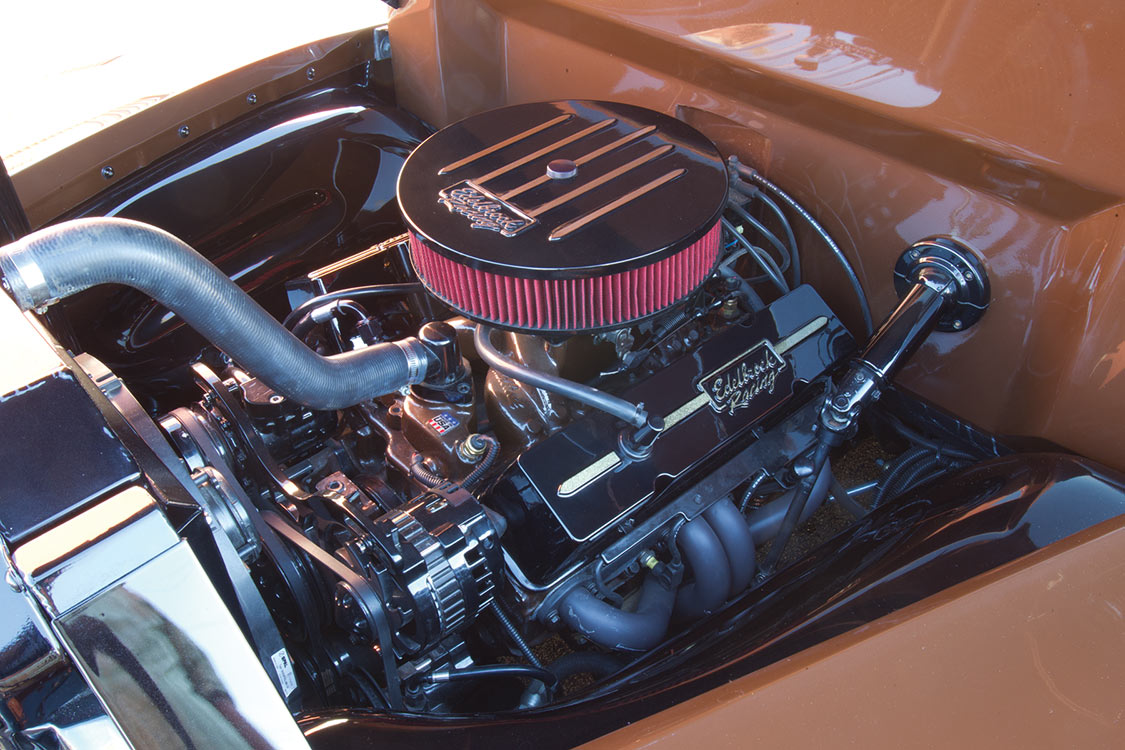
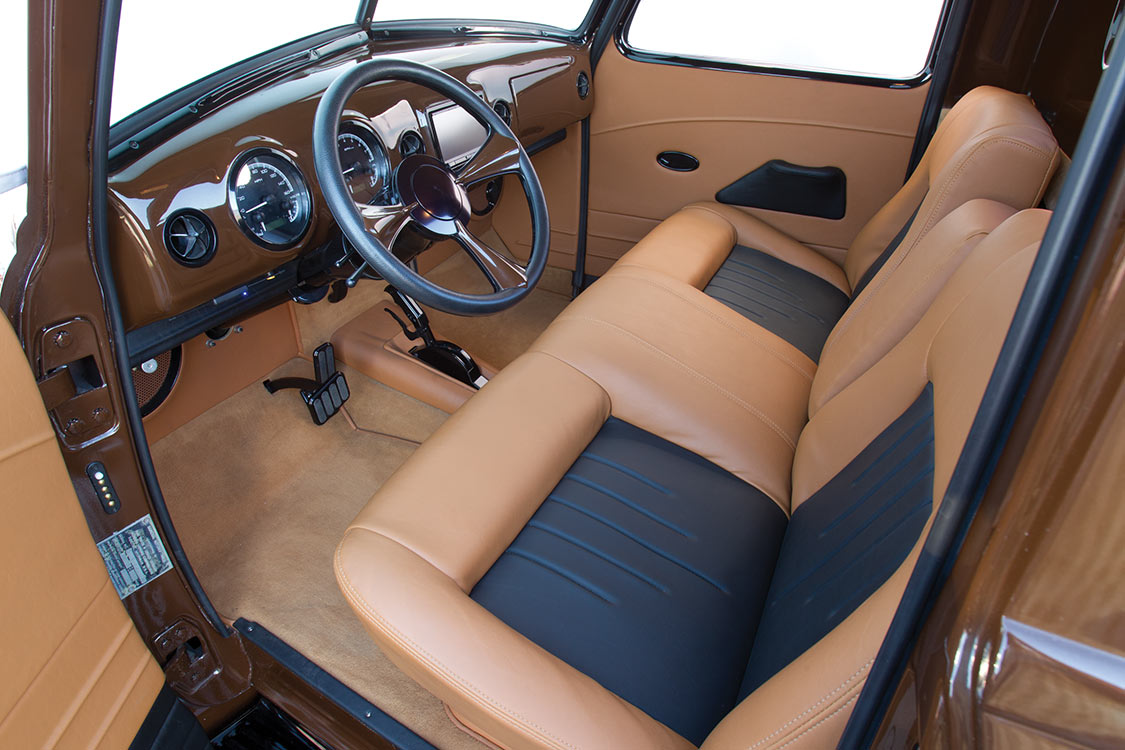
As for Chris, he really couldn’t be happier with the outcome. He’s even gone so far as to incorporate his favorite movie into his first custom build, which further personalizes it.
“I’ve named the truck Sexual Chocolate after my favorite movie, ‘Coming to America,’ not just because it’s the same color as chocolate. I’m a huge Eddie Murphy fan, and if you don’t already know, he plays 10 or 11 different characters in that movie. One was named Randy Watson, and he sings with the band called Sexual Chocolate. My license plate also reads ‘RWATSON.’ I don’t know if anyone else would’ve put that together, but there it is.” Chris may not have realized just how amazing it would be to own a fully customized truck like the one he has now, but he’s loving every aspect of it. “I can take this truck anywhere and it’s a huge crowd-pleaser and a great conversation piece. I love the attention it gets, not only from truck people, but the everyday Joes as well. Hope to see you all at the next big show!”
Editor’s Note: A version of this article first appeared in the May 2017 print issue of the Drive Magazine.
D!: Meet TJ. He’s an every-man’s-man. Sharp-witted, eclectic and a shrewd business owner. TJ and I sat down to talk about his latest love, this sumptuous 1961 Mercury Monterey Convertible. This is not his first foray into the restoration game. But I’ll let him tell his story:
TJ: I had just finished building my 1953 Chevy Bel Air Hardtop and I was ready for a new project. So I put my Bel Air up for sale and ended up selling and shipping it to a rockabilly barber in New Zealand who was looking for daily driver and cool car to park in front of his barber shop.
After the transaction, I suddenly had no car. Not good for a “car guy”. So I began searching to see what was out there. I wasn’t looking for anything specific. Just something old and cool that I thought I could bring back to life.
I came across an ad that was poorly written with fuzzy photos. I could tell the car was long, and a convertible, so I decided to check it out.
…I suddenly had no car. Not good for a “car guy”.
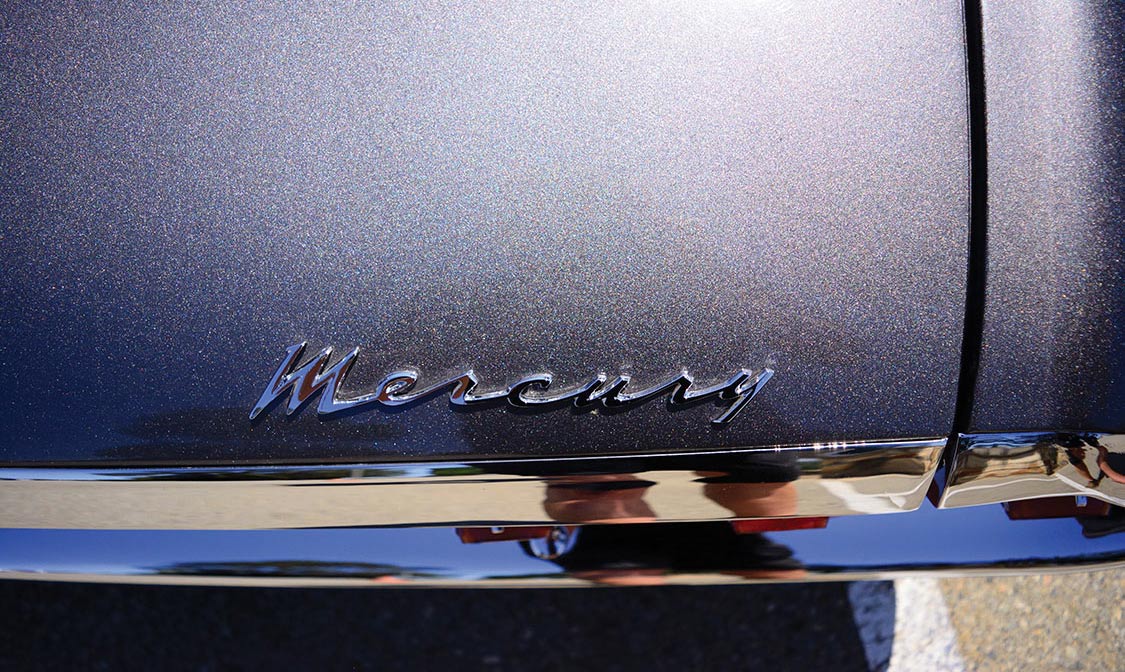
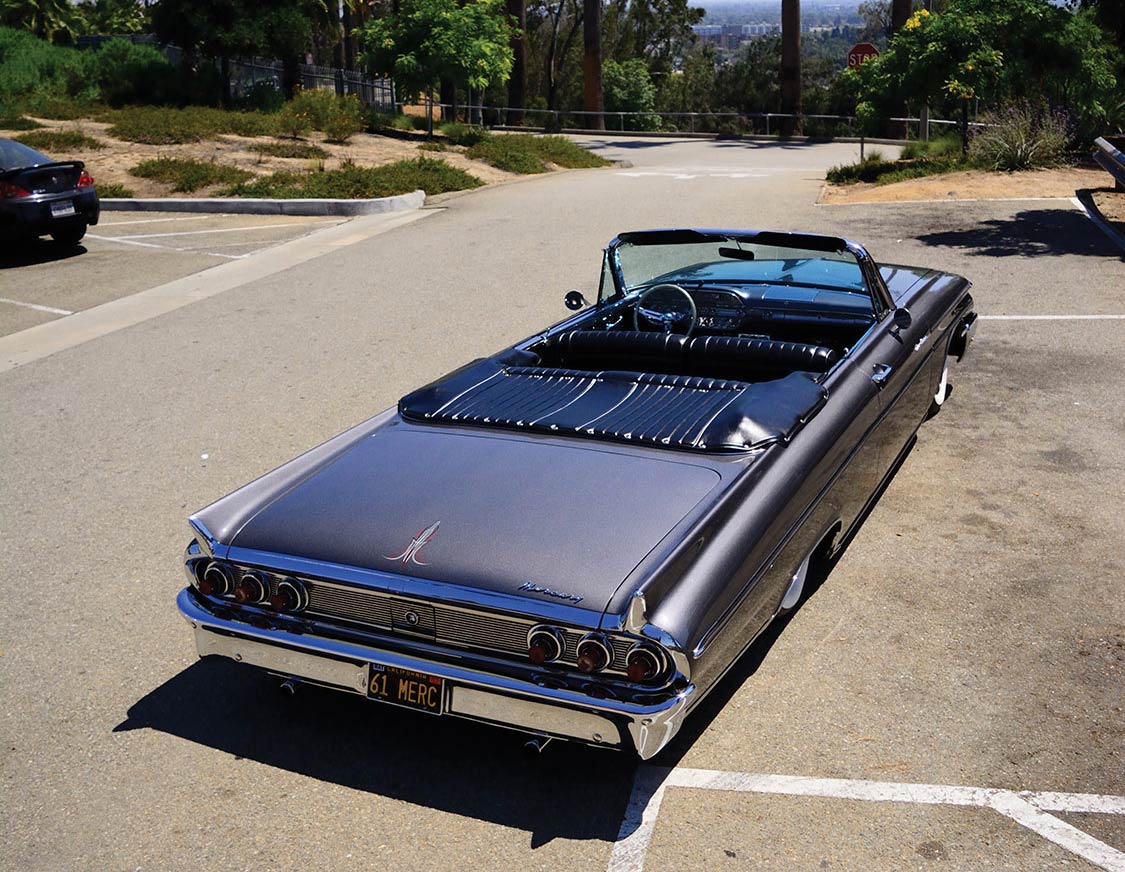
The car was located in Claremont, California. I made the trip and met with the owner. The car was completely run-down and the parts were scattered all around the yard. He was an elderly man in his late 80s. He told me that he was the second owner. The car was purchased brand new at the Mercury Dealer in Montclair, California.
He said he had owned it for 40 years and was planning to restore it some day but never got around to it. So I told him that I would like to make him an offer. He was asking $10,000. I offered him $5,000 – what I felt it was worth based on the condition, and massive amount of work to bring this classic back to life. He told me NO… so I went on my way.
About a week later the owner’s wife called and told me that they would take my offer of $5,000. She also offered to bake me some chocolate chip cookies and the sale would take place under two conditions: #1) I would come pick up the car ASAP, and #2) That I would come back once the car was restored and take them for a ride.
Deal!
When I returned approximately two years later – with the car completely restored, they both cried and gave me a hug. They were so happy to see “The Merc” come back to life.
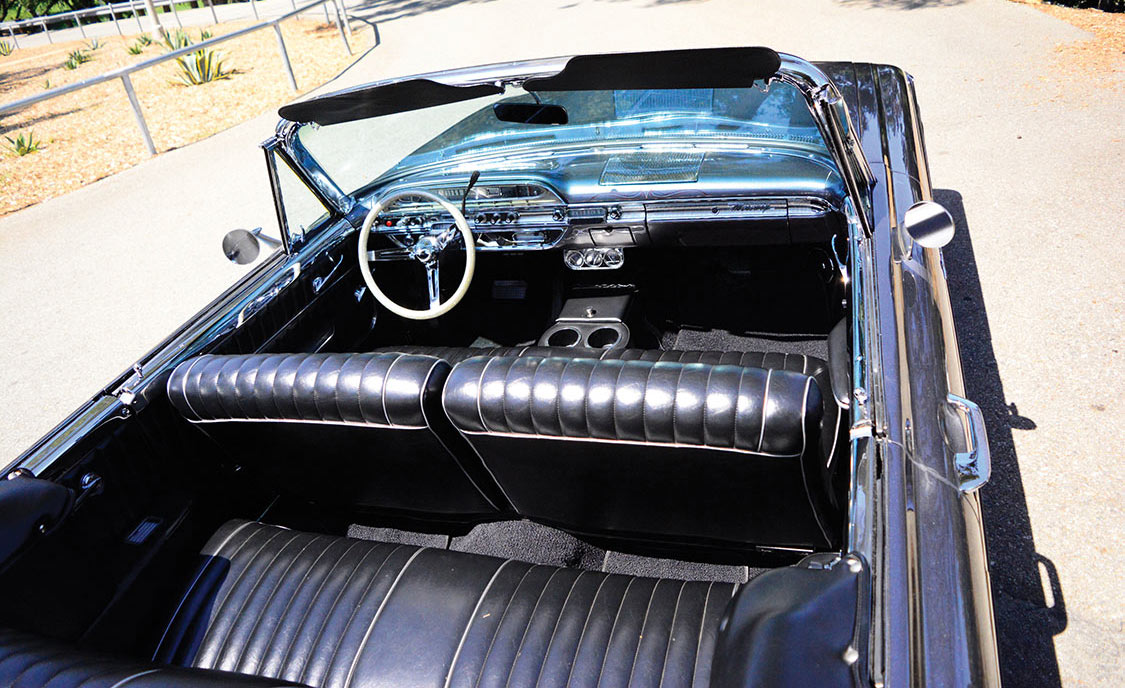
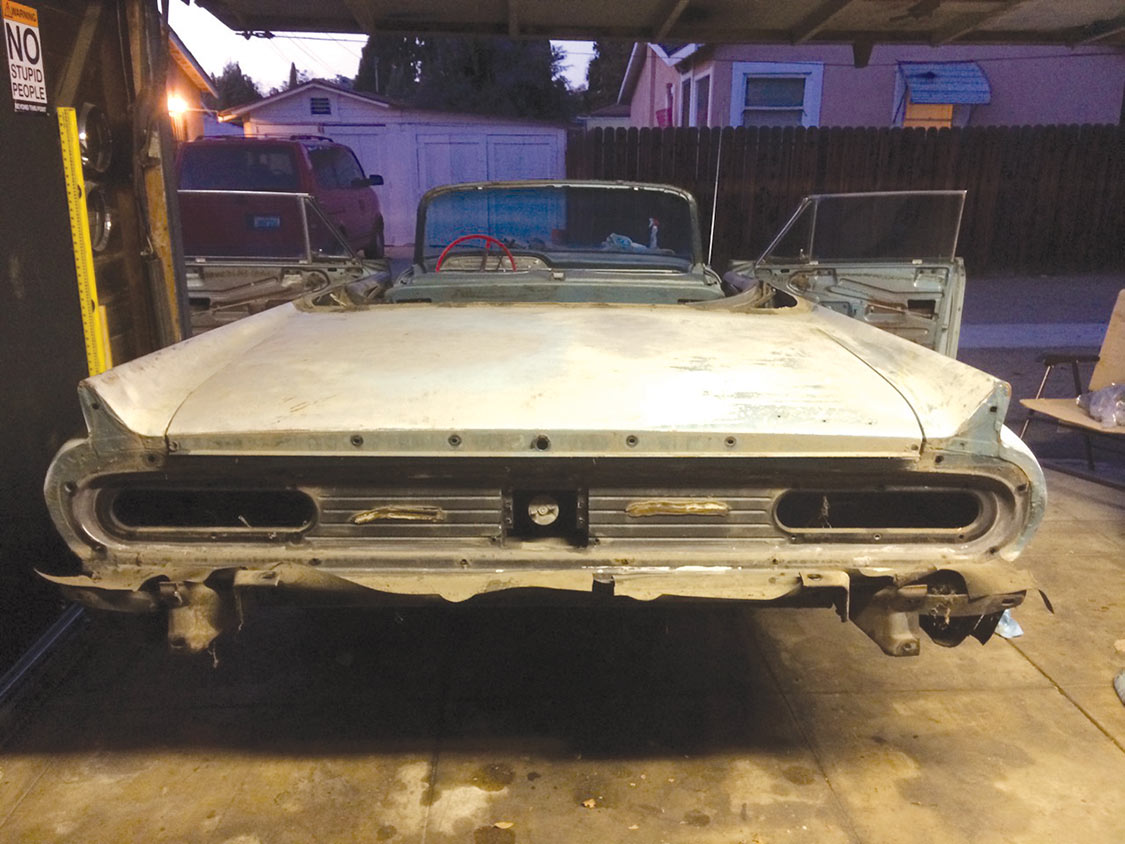
D!: That’s a fantastic story of finding a gem in the rough.
So tell our readers more about the two-year restoration project.
TJ: I dragged the “The Merc” home and called my friend and classic car restoration expert Ray Rose to help me with this massive restoration project. Ray has been working on cars since he was 12 years old. The first thing we did was completely dismantle the car and bag and tag all the miscellaneous parts. We then sent the car out to for body and paint and sent all of the bright work, including all of the stainless steel sent to be chromed. Next, we started from the ground-up with the RideTech Suspension and Air Ride System along with new disc brakes, front and rear; provided by “ABS Brakes Inc.” in Orange, California.
“The Merc” is powered with the original numbers-matching big block V8 engine (390 6.4L) The Engine was rebuilt and added an Edelbrock Cam, Edelbrock Intake Manifold, and Edelbrock Carburetor. The Mercury also features an automatic transmission, power steering, new fuel pump, new water pump, new radiator, two brand new batteries with a battery isolator, and the electrical has been completely redone. This Beautiful 1961 Mercury Monterey Convertible also features a brand new top, brilliant metallic paint, and a new interior designed, sewn, and installed by Ray Rose.
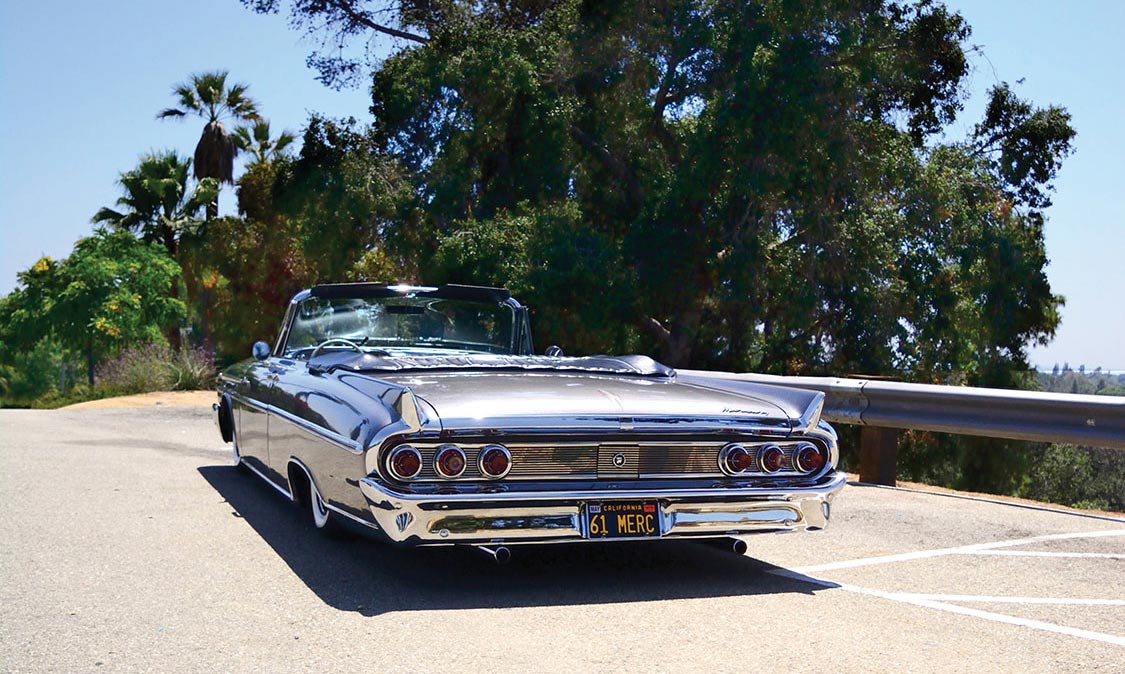
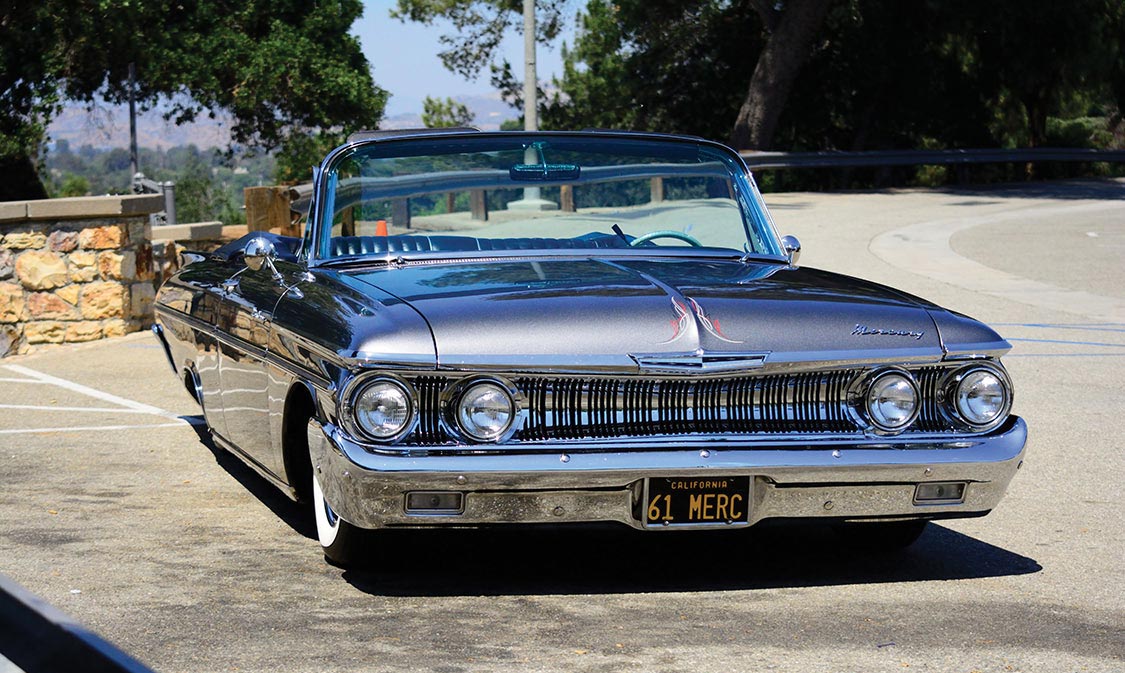
This “61 Merc” has spent it’s entire life in sunny Southern California and in addition to the mechanical overhaul, we triple-chrome-plated all the bumpers, body trim, emblems, including all of the stainless steel trim. To top it off, we contacted our friends at “The Candy Shop” in Orange, California and they installed brand new 15” rims with Spider Caps and white wall tires. This is a show-stopper and a gorgeous example of a “True California Cruiser”.
D!: Thank you TJ, for sharing your restoration story.
When TJ and I met at Hillcrest Park in Fullerton for the photo shoot, the Merc gleamed brightly in the afternoon summer sun. His efforts shown just as brightly.
She truly is One Sweet ‘61.
Editor’s Note: A version of this article first appeared in the October 2017 print issue of the Drive Magazine.
When you’re out at the auto parts store do you ever try to match up the guy in the shop to one of the customized vehicles parked outside?
All obvious giveaways aside (a dude wearing a Camaro hat or someone buying one of those “pee on Chevy” window decals), there are sometimes clues that can help make the right connection. It’s just an all-too-natural thing to do when you’re standing in a checkout line that’s seven deep with customers who all need to know which new-car scented air freshener actually smells the most like a brand-new car’s interior. A guy needs something to distract himself.
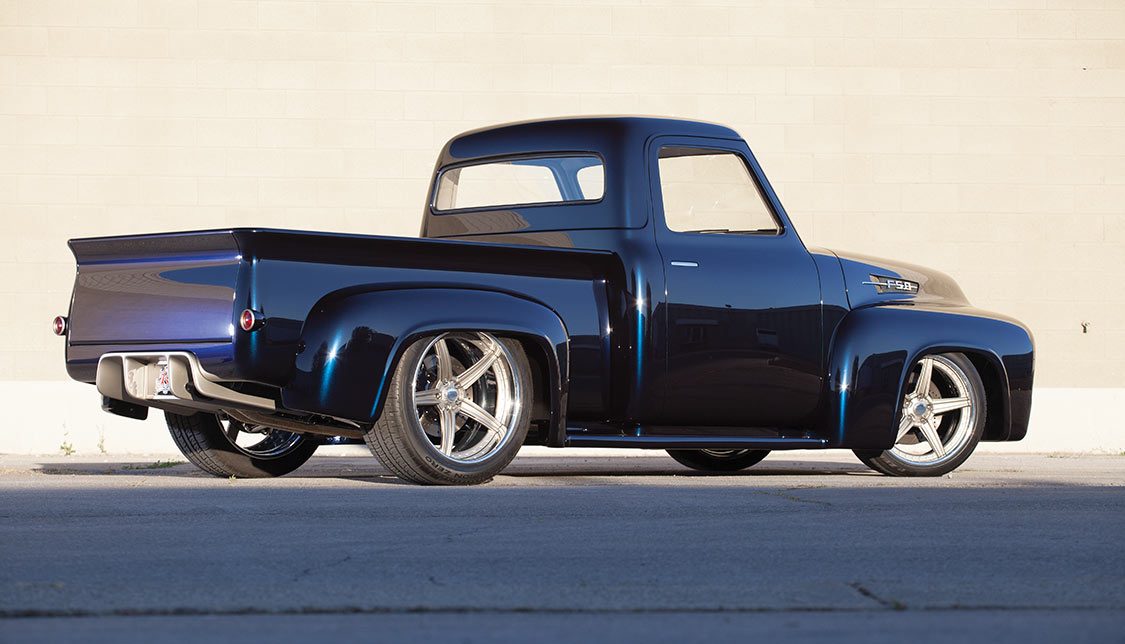
One telltale sign that gives someone away is their size, more specifically, their height. One might assume that a taller gent would be stepping into the jacked-up diesel rig that just happens to be taking up two parking stalls outside, or that a shorter guy might feel more at home in something along the lines of a Fiat. Well, neither of those assumptions is too reliable, because we’ve seen guys tall enough to play center for the local junior college basketball team squeeze themselves into body-dropped mini-trucks.
For guys like Otto Vega (who just happens to stand at 6-foot 4 inches), comfort is everything, but he isn’t one to sacrifice his taste in vehicles for the sake of skating around in cars and trucks that don’t resonate with his personal taste. He has come to grips with the fact that cars (old and new) just weren’t, aren’t and never will be designed with his size in mind. His solution? We’ll get to that in a moment. It wasn’t until he met a certain group of customizers that the answer became clear as crystal.
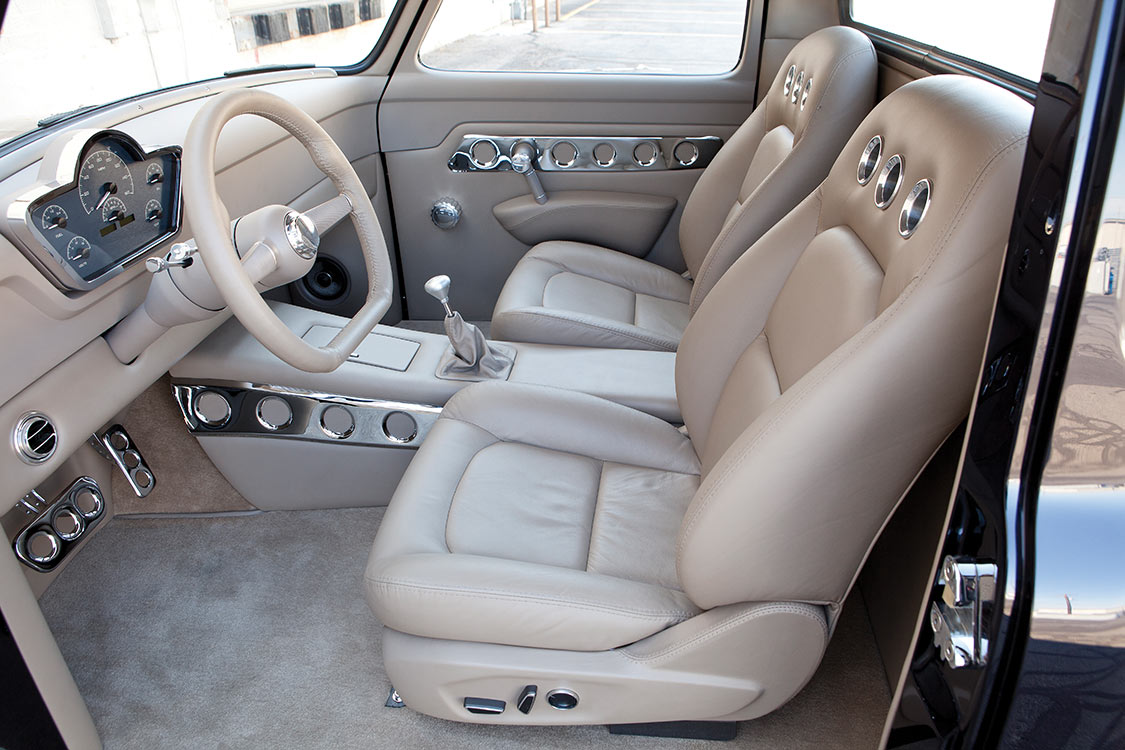
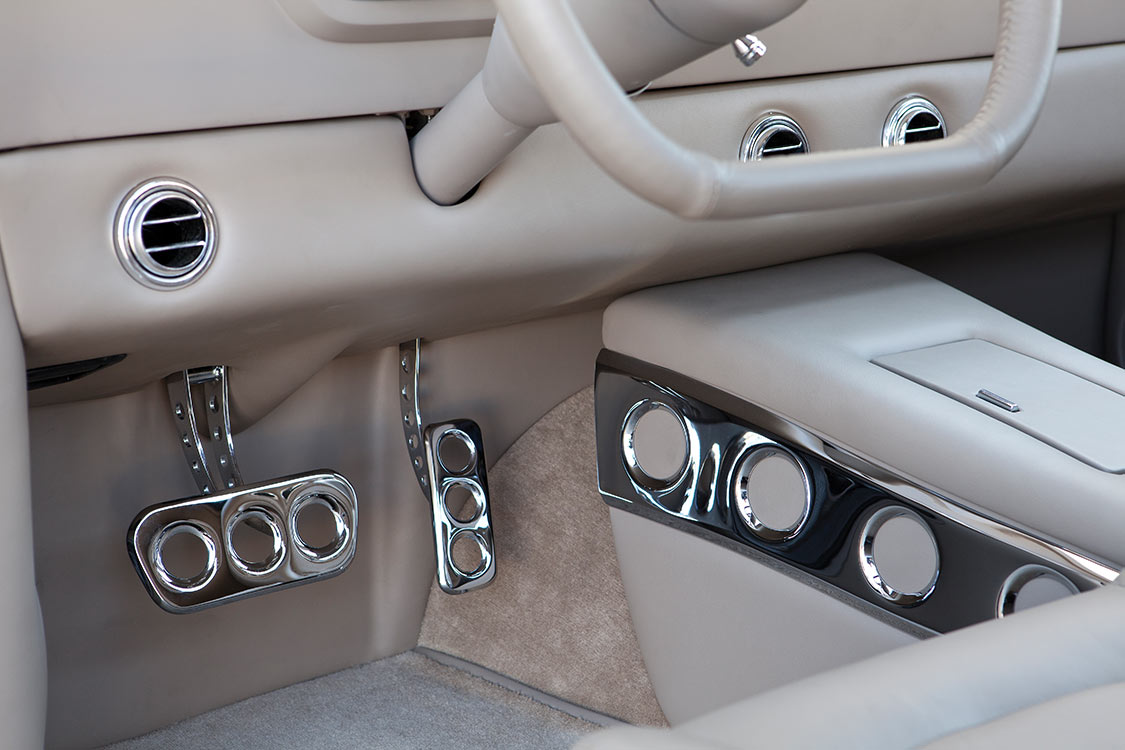
Otto had been in contact with Dave Kindig of Kindig-It Design about checking out a ’72 Datsun 240Z they had for sale. Upon arrival, he gave the car a good once-over, and the two talked about other vehicles and projects that might also be of interest. Otto had mentioned that he had a ’54 Ford F-100 that had been sitting in his garage for a few years and that he had strong intentions of ripping into one day. His very first vehicle was a ’55 Ford pickup, so he just had to get another one that was similar to the one he owned years back.
As the visit progressed, Otto and Dave struck a deal, but not about the Datsun. They came up with a plan for the ’55 instead. Otto jumped on a spot on the shop’s waiting list, which was a solid year at that point. The truck was shipped to Kindig-It Design as soon as he got back home. Then the truck sat in the shop for a year before they began any work on it. From there, the Kindig-It crew spent 12 months custom-tailoring the Ford to Otto’s precise measurements.
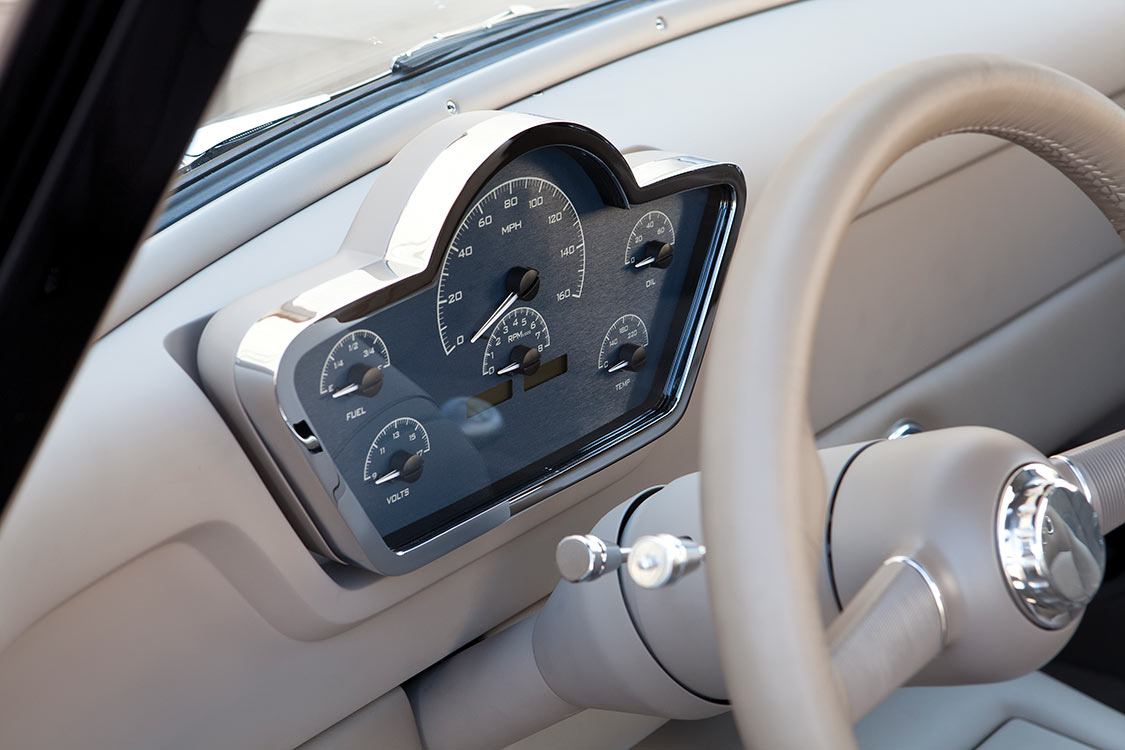
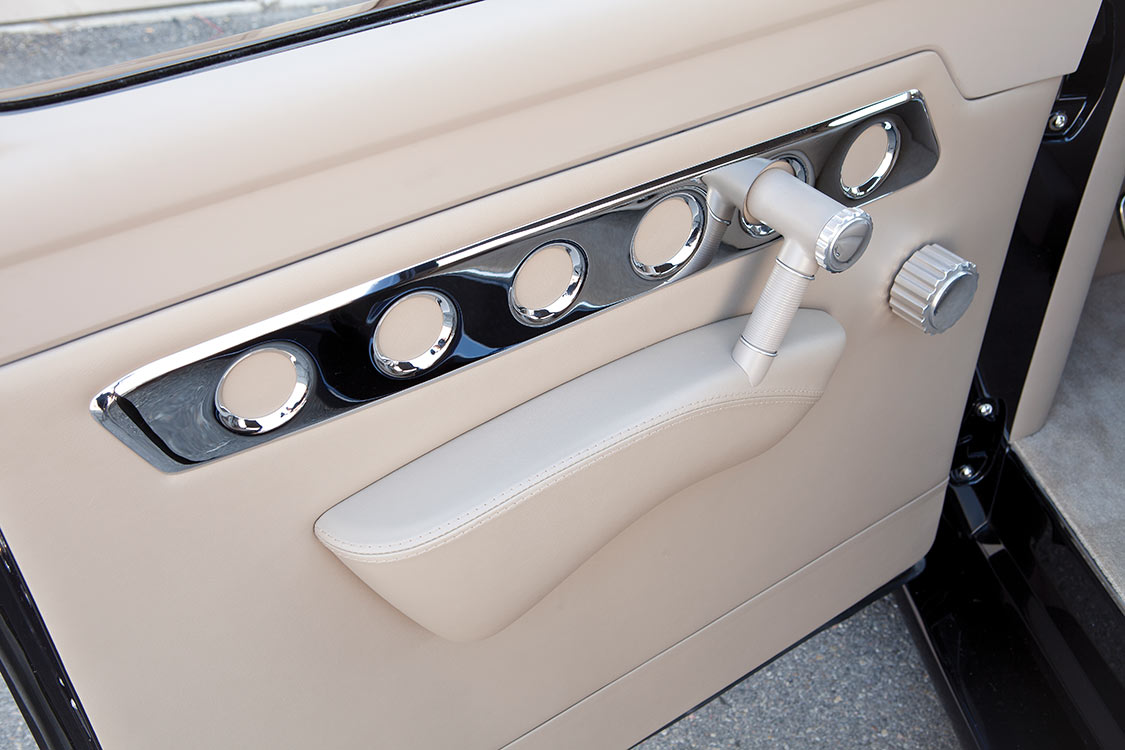
Okay, maybe that last line sounded like hyperbole, but it really wasn’t. Of course, the truck’s body modifications were shaped to what Otto had in mind, but the truck’s length was actually stretched to better fit his stature.
The Ford was personalized in a way that most trucks aren’t, and it was all done to achieve a truly custom level of comfort and performance. “Otto wanted to build something he could get in and out of and sit in comfortably,” says Dave Kindig of the truck’s most understated yet huge modification. “We modified the Ford to fit his 6-foot-plus frame, and we had to do it in a way that didn’t look like we simply stretched the truck in overall length, which would have looked odd and disproportionate.
Instead, we got the extra length we needed by moving the firewall forward and stretching the wheelbase 8 inches overall: 4 inches through the doors and moving the axle forward 4 inches in the front gave us the extra room we were after.”
A comfortable fitment only made up half of the equation for creating more room, however. Otto drives his vehicles as they were intended to be driven—hard. And if he doesn’t sit comfortably and doesn’t have adequate space for quick movement, he would be unable to use every bit of his truck’s performance abilities.
“Otto is the type of guy who likes to do 120 mph on the turnpike by his home, so the idea of giving his truck the power as well as the space he needs to take advantage of its handling were both equally necessary. We wanted to make sure he could utilize both comfortably,” Dave adds.
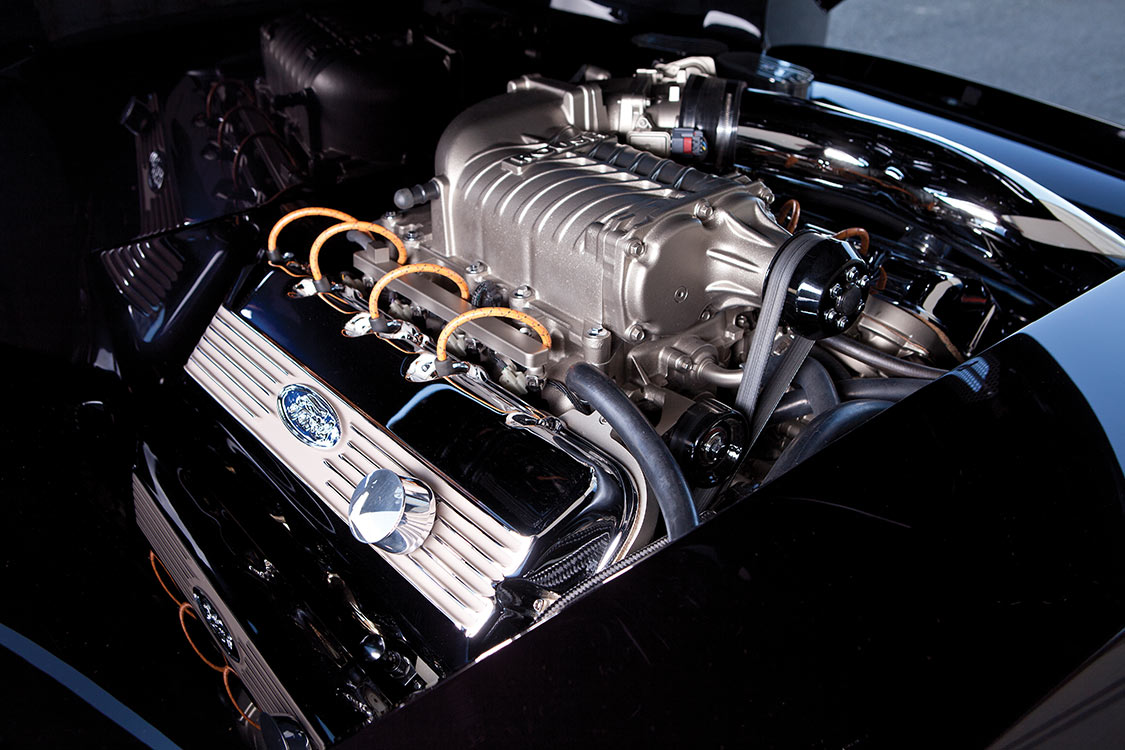
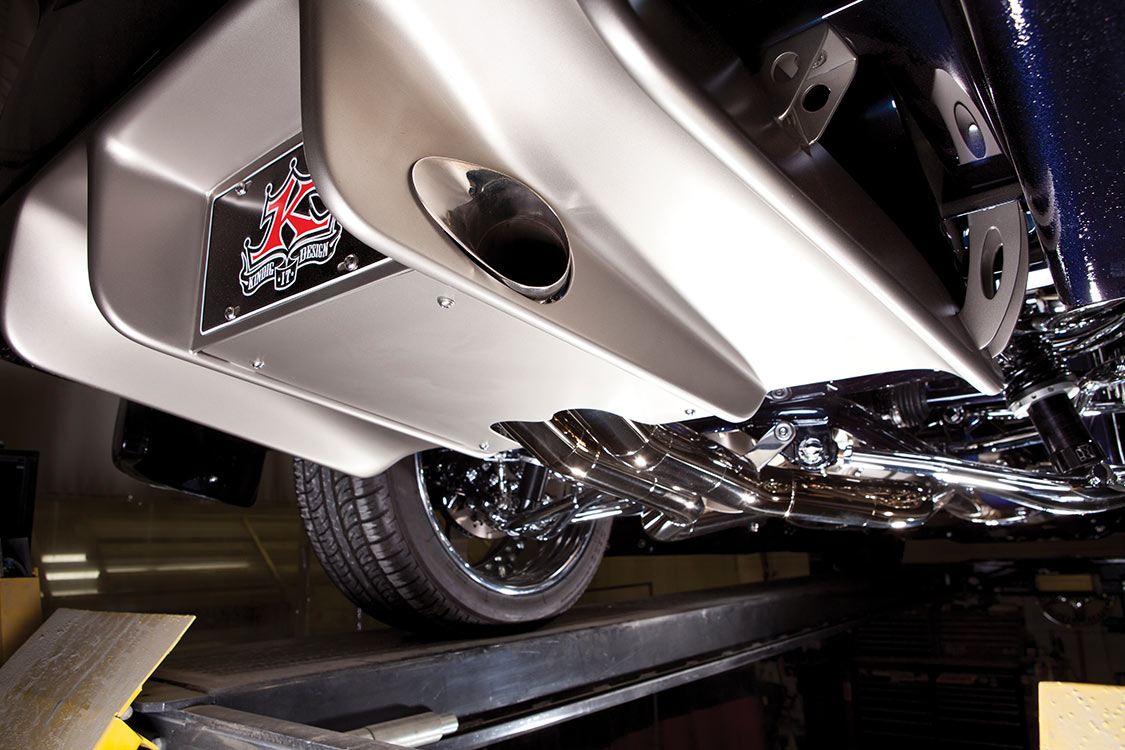
But extra legroom is just where the impressive nature of this truck begins. The performance that Dave briefly touched on revolves around the F-100’s power plant, a supercharged 5.0L Ford Coyote engine from Roush Performance. The Bowler 4R70 performance transmission harnesses the engine’s stable of 625 horses with ease and lets Otto rip the truck down the highway at eye-watering speeds.
There isn’t one inch of this truck that hasn’t been customized in one way or another, and that is something anyone can see from clear across the street. The interior is out of control, the body mods and paint are as trick as can be, and if you’re lucky enough to catch the truck aired up, you may be able to get a glimpse of the chassis and undercarriage, which are absolutely pristine.
Otto finds his truck surrounded by gawkers at all times. These would be the people who skip right past the guessing game of matching up drivers to their potential rides and shoot straight for waiting around in the parking lot to have the opportunity to shake the owner’s hand.
We can respect this sentiment, but this is assuming that Otto would even dare consider leaving this masterpiece unattended while out mixing with the general public. Some vehicles are best kept in gear with a driver ready to jet at any given time.
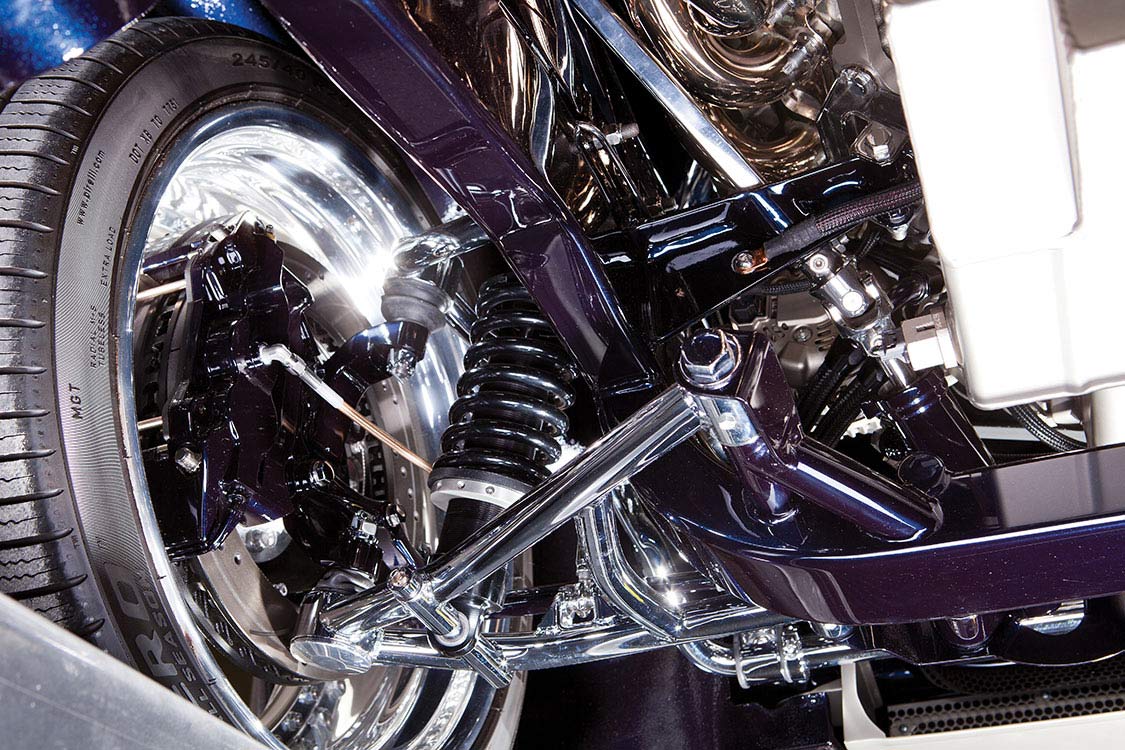
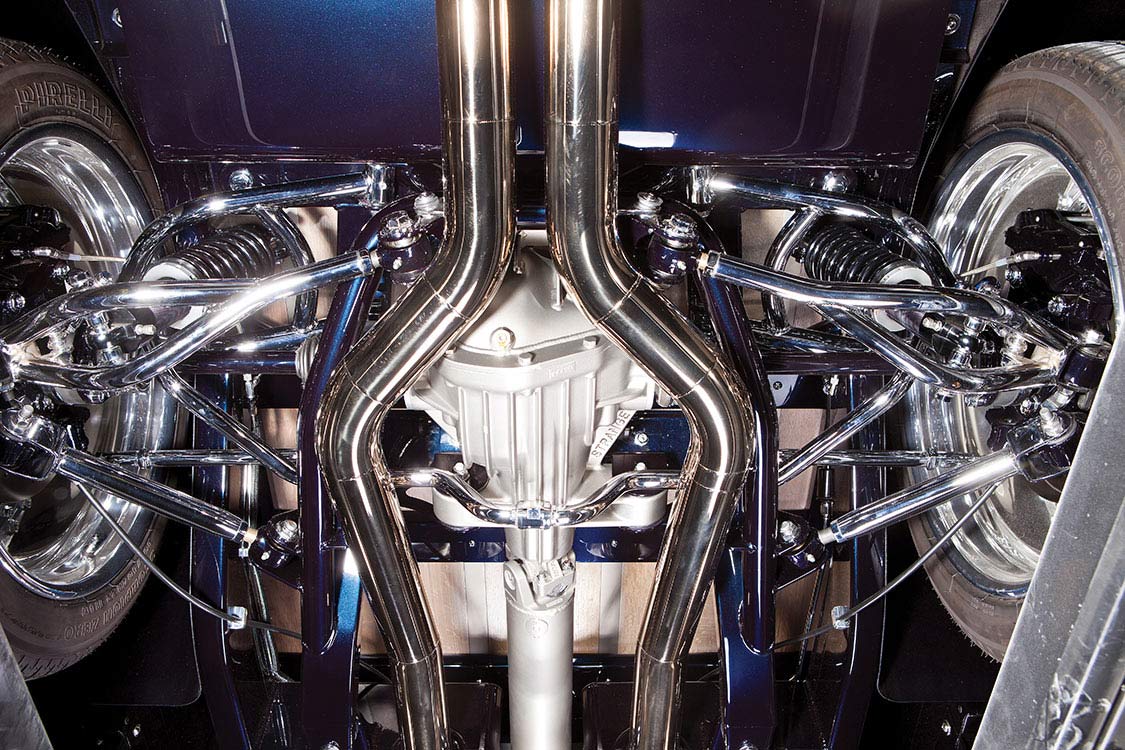
“We helped build Otto’s truck to fit somewhere in the ‘farm truck meets supercar’ category,” Dave goes on to say. If you haven’t dreamed of such a fusion, here is a physical example to help get an idea of what the mash-up could look like. Not only does the truck feature highly innovative design work and execution, it also maintains that classic nostalgia from Otto’s youth that he was trying so hard to capture with this build. Purists as well as those looking to push boundaries with vintage vehicle projects are sure to fall in love with everything this truck stands for.
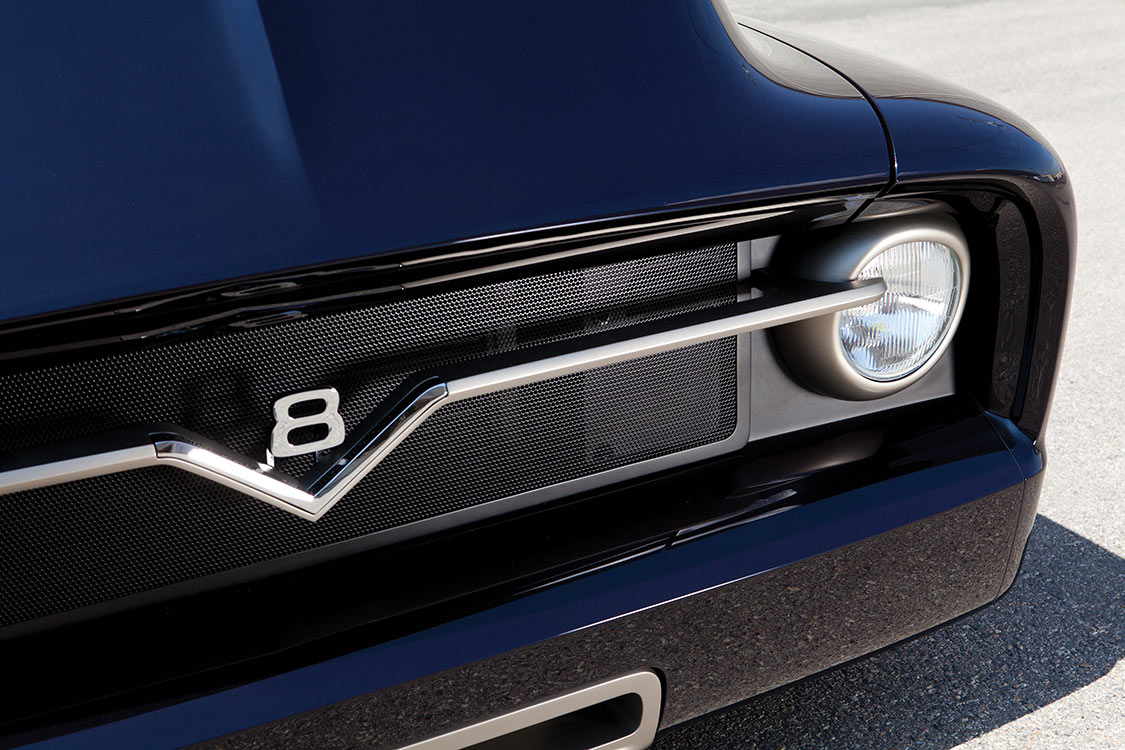
Otto Vega
1954 Ford F-100
Salt Lake City, UT
Editor’s Note: A version of this article first appeared in the July 2017 print issue of the Drive Magazine.
Over the years I’ve had a lot of people ask for advice on their car projects. Most often the questions are technical, but today they’re asking what they can do to save money.
The answer is always the same. If you want to save, “Don’t cut corners”! That’s right, cutting corners in the long run will be your biggest expense, and you could end up hating the project, as many do.
Building a car from scratch is a long and tedious process at best. Now I’m not saying it isn’t fun; it’s a lot of fun. But, you’ve got to have a plan, and it cannot include cutting corners.
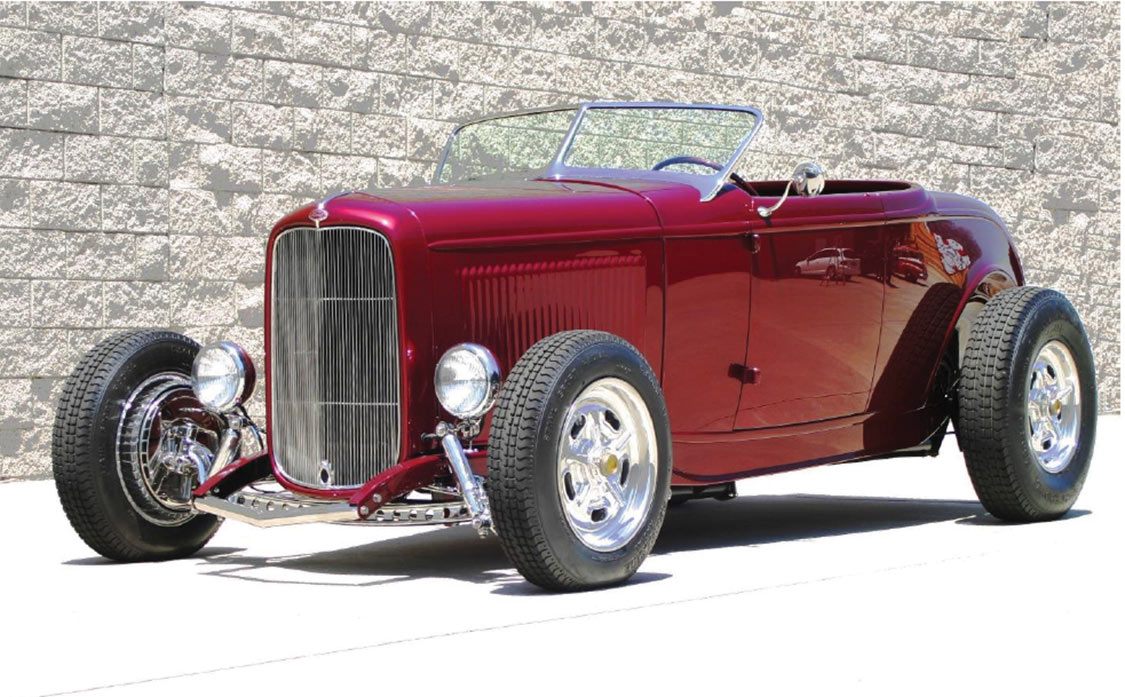
Putting a car together or car mod is just like building a house. You can’t start until you’ve laid a proper foundation. You can’t get ahead of yourself, you know what I mean. How many of you guys have painted something premature in the project (let’s say spindles, because you got a deal, or included them with some other parts you were doing), only to find out that they have to be heated to fit. Say good bye to your shortcut.
What are the worst shortcuts? The “biggie” is not fitting up the complete car with all the sheet metal in place before going to paint. People seem to think that since the fenders, hood and deck lid came off of a car just like theirs, they must fit. Wrong—every time wrong! When you fit up a car, it has to be all the way.
I’m talking a rolling chassis with the finished wheels and tires (make sure it steers and doesn’t rub anything) and a complete engine and transmission. Go ahead, adjust the doors with no weight in the car and see what that little shortcut gets you; or better yet, try chopping a top not using a complete chassis as a foundation. It’s not a pretty sight.
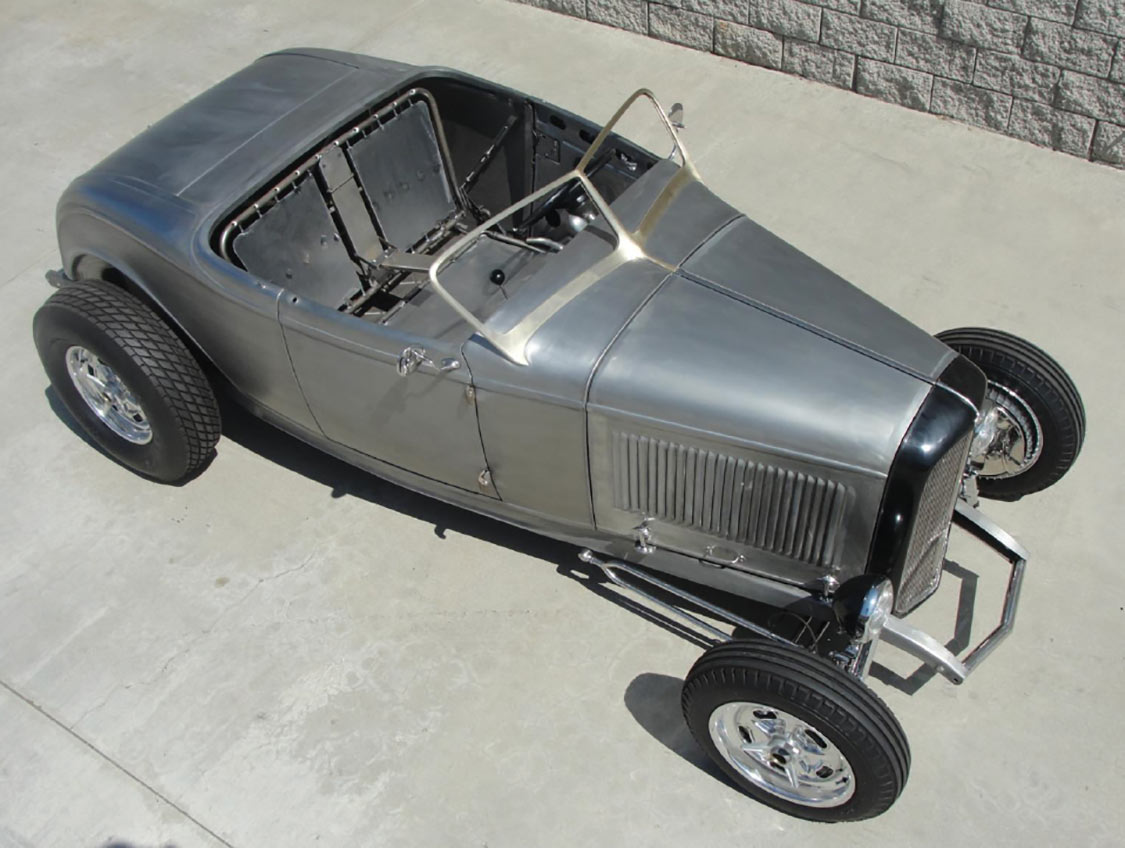
When you take the time to put it all together, you win big time: you save lots of money, it’s fun, and you can deal with problems as they arise—not through costly compromises later. Be patient. I know the car looks cool with a little color or chrome on it, but it looks a lot cooler when you’ve only had to do it once.
Another major cost savings is avoiding “project burnout”. You can bet on at least three burnout points during a build, so be careful not to stumble. Watch out for the one between chassis completion and fitting the body and sheet metal. The next involves not wanting to tear your car down for paint because it’s cool having what appears to be a finished hot rod in the garage.
The last is assembly and wiring, which is fun but also frustrating. Burnout leads to shortcuts, and remember they can be expensive. Hot rods cost enough as it is, so make a plan, stay cool and don’t burn out.
Editor’s Note: A version of this article first appeared in the September 2016 print issue of the Drive Magazine.